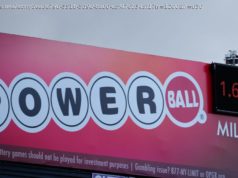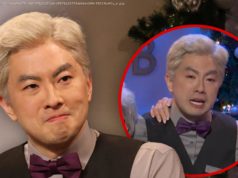 When Donald Trump visited the CIA over the weekend to make a speech, many commentators noted that his audience clapped and cheered enthusiastically. Now, according to CBS News , intelligence sources are pushing back:
When Donald Trump visited the CIA over the weekend to make a speech, many commentators noted that his audience clapped and cheered enthusiastically. Now, according to CBS News , intelligence sources are pushing back:
Authorities are also pushing back against the perception that the CIA workforce was cheering for the president. They say the first three rows in front of the president were largely made up of supporters of Mr. Trump’s campaign. An official with knowledge of the make-up of the crowd says that there were about 40 people who’d been invited by Trump, Mike Pence and Rep. Mike Pompeo teams. The Trump team expected Rep. Pompeo, R-Kansas, to be sworn in during the event as the next CIA director, but the vote to confirm him was delayed on Friday by Senate Democrats. Also sitting in the first several rows in front of the president was the CIA’s senior leadership, which was not cheering the remarks.
Still, as CBS notes, some of the CIA employees who turned up at the speech were probably real Trump supporters; they had to come into their workplace on the weekend to see him, which suggests that some at least were real fans.
So was this real applause, or was it fake? If the applause was, as it appears to have been, partly engineered, the difference is less important than you might think.
This isn’t the first time Trump has done this
This isn’t the first time that Trump has engineered applause. When he first announced his candidacy, he got wild cheers — from actors who had been paid to applaud him (Trump then stiffed the company that hired them for four months ). When he gave his first news conference as president, he filled the back of the room with aides to cheer for him, and jeer at the journalists he was attacking.
There’s a specialist term for rent-a-clappers
Trump is actually reviving a very old tradition — the tradition of the claque. A claque is a group of people whose job is to generate applause. In the description of the 1911 Encyclopedia Britannica, a claque is:
an organized body of professional applauders in the French theatres. The hiring of persons to applaud dramatic performances was common in classical times, and the emperor Nero, when he acted, had his performance greeted by an encomium chanted by five thousand of his soldiers. … The recollection of this gave the 16th-century French poet, Jean Daurat, an idea which has developed into the modern claque. … There are commissaires, those who learn the piece by heart, and call the attention of their neighbours to its good points between the acts. The rieurs are those who laugh loudly at the jokes. The pleureurs, generally women, feign tears, by holding their handerkerchiefs to their eyes. The chatouilleurs keep the audience in a good humour, while the bisseurs simply clap their hands and cry bis! to secure encores.
Trump, probably without knowing about the historical precedent, has revived this old tradition.
To understand how claques work, look at bee swarms
Obviously, the claque is usually far smaller than the audience that it is supposed to manipulate. So how can it be effective? The answer has to do with social influence. Scott Page, a political scientist at the University of Michigan, describes how simple systems of social influence (such as standing ovations or bee swarms) produce collective outcomes in his book “Diversity and Complexity” (see here if you want to play around with his models). For example, when bees swarm to attack an intruder, they are influenced by pheromones — chemicals that bees spread through the air to communicate. When a bee attacks an intruder, it starts to diffuse a pheromone that communicates the presence of a threat to other bees, perhaps causing them to attack. Different individual bees might have different “thresholds” — meaning that some will react when there is only a small amount of pheromones in the air, and others require a relatively large amount of pheromone before they attack.
This then means that bee swarms against intruders are shaped by social influence. Initially, perhaps only a small number of bees, who see the intruder, attack. If they spread pheromones, then other bees, which only need a small amount of pheromones to be triggered, may attack too. As they add more pheromones to the air, this can create a kind of cascade effect, in which more bees keep attacking, producing more pheromones, which in turn trigger more bees. However, it is also possible that the bee swarm will taper off. When you start to play around with the mathematical models underlying this kind of behavior, it becomes clear that even relatively simple models can produce complex outcomes, in which tiny changes in starting conditions can have vast consequences for results.
Audiences are more like bee swarms than we might like to think
This kind of system of complex social influence explains how audiences respond to speeches and plays. Typically, when we decide to clap or cheer, or to sit down and remain silent, we are not only thinking about our own reaction to the speaker. We are also thinking about how those around us are reacting, and are likely to react. If you are the only person in the audience giving a standing ovation, you are likely to feel very silly very quickly. Just like bees, different people may have different thresholds, depending on how strongly they feel about the performance, what they think the appropriate norms are for clapping and cheering, and how easily they get embarrassed.
Imagine that Trump’s crowd at the CIA was composed of a mixture of different individuals, with different attitudes toward Trump. (In real life, we know nothing about the individuals in the crowd, since their identity as CIA employees is confidential, but this seems like a reasonable bet). Some people in the crowd were plausibly strong Trump supporters, who would likely have wanted to applaud, but may not have been sure that it was appropriate to cheer a speech with significant partisan undertones. Others may have been weak Trump supporters, who might not have wanted to cheer. Others still may have had no strong views on Trump, or been opposed to him. With an audience like this, it is unpredictable whether they will clap and cheer, or applaud faintly and politely, or not applaud at all.






